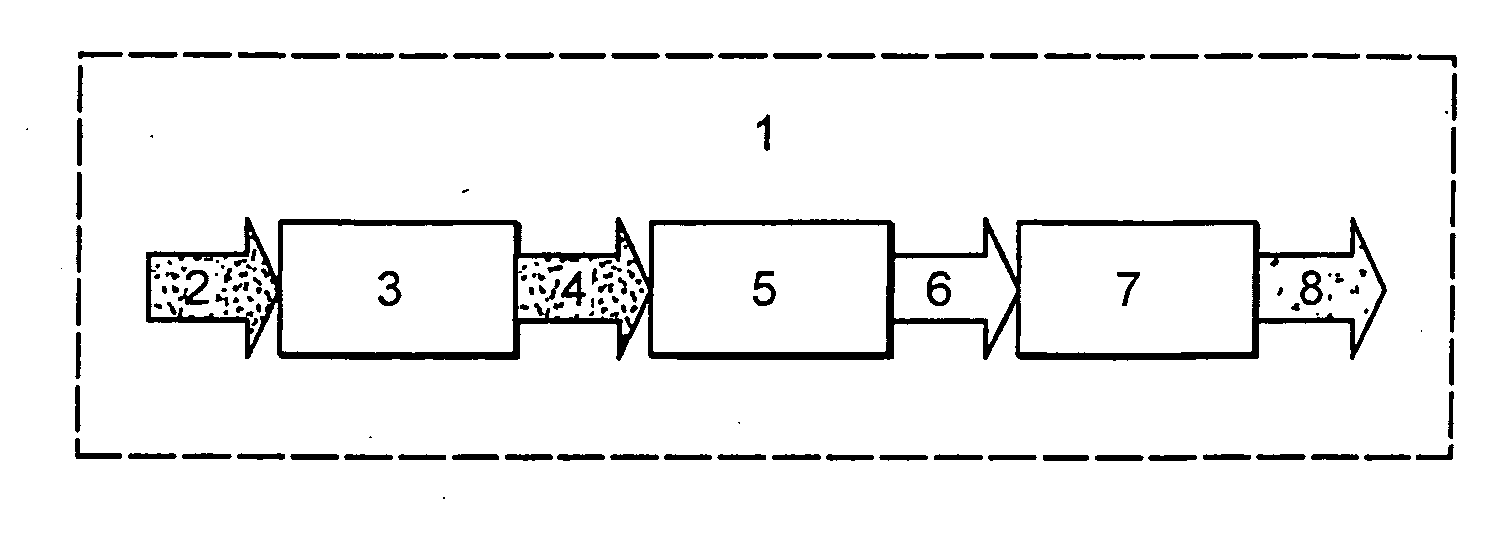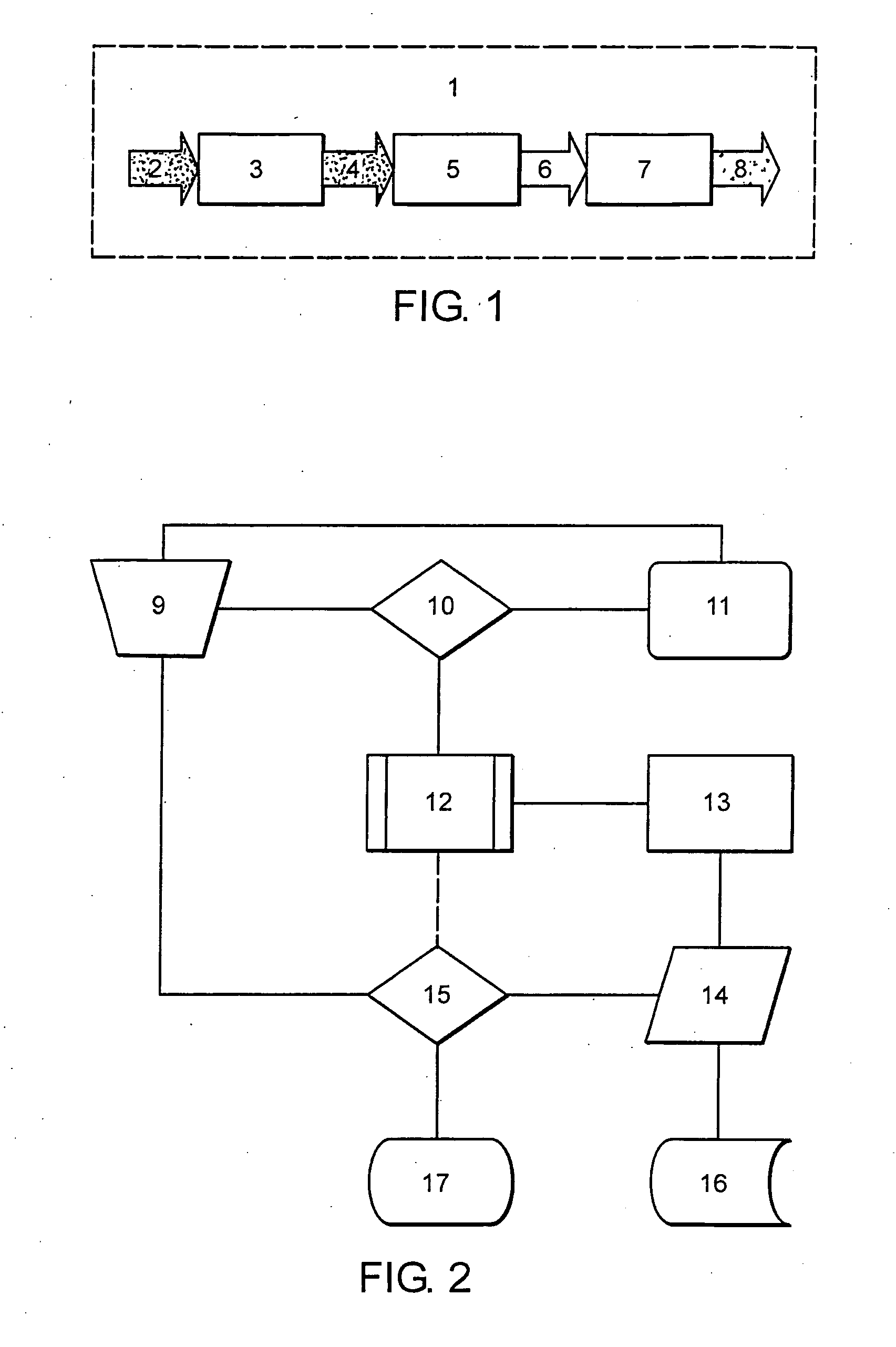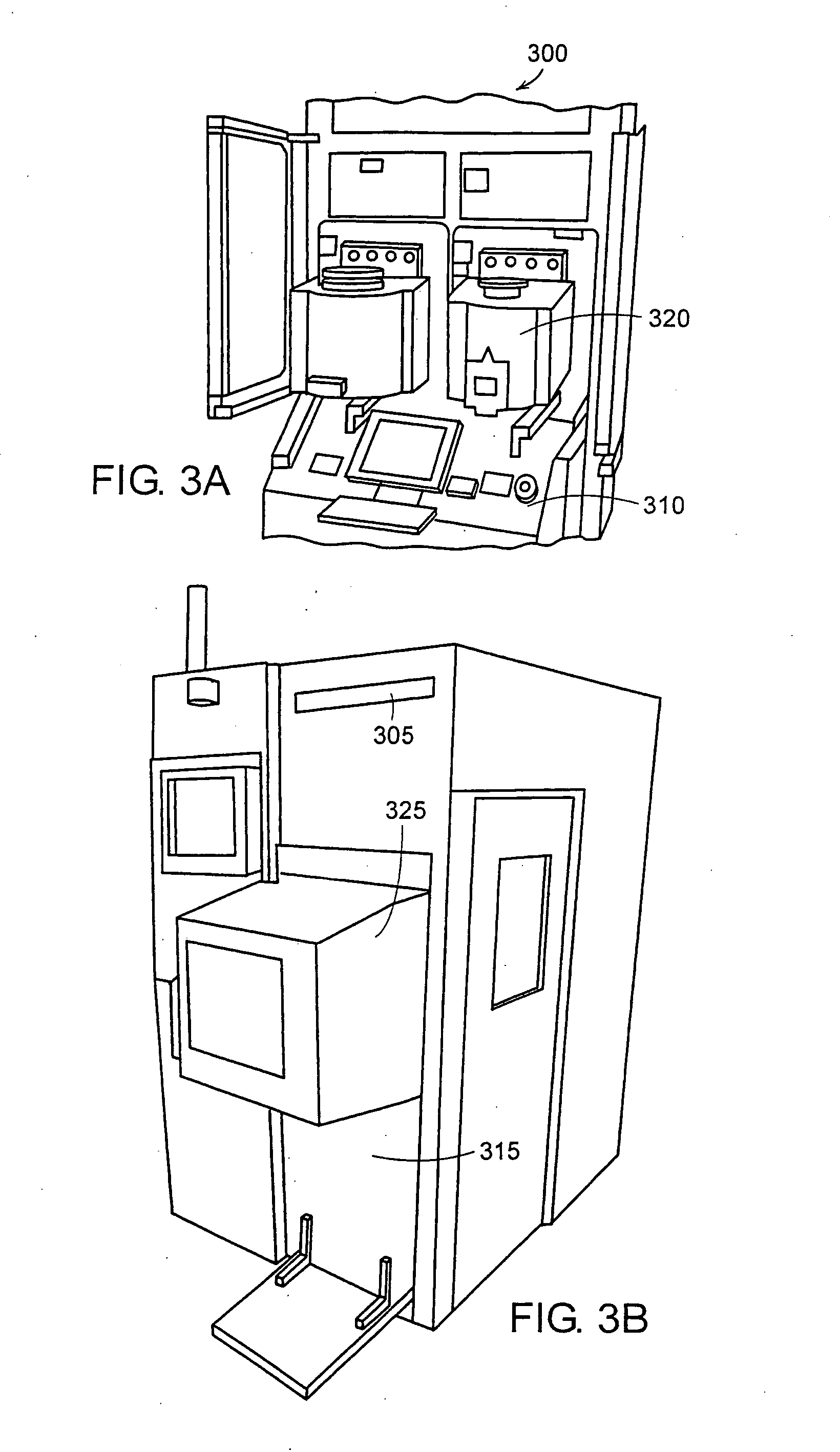Purging of a wafer conveyance container
a technology of a conveyance container and a wafer, which is applied in the direction of separation process, dispersed particle separation, chemistry apparatus and processes, etc., can solve the problems of inability to provide gas of high purity to the fabrication facility, defect and wafer loss, and more likely to enter the stream
- Summary
- Abstract
- Description
- Claims
- Application Information
AI Technical Summary
Benefits of technology
Problems solved by technology
Method used
Image
Examples
example 1
FOUP Atmosphere Testing
[0078] The atmosphere of a FOUP 450 was examined for hydrocarbon contaminants under static conditions and with a XCDA purge. The experimental setup for the FOUP contamination test is shown in FIG. 4. A mass flow controller 410 was used to maintain a flow rate of the purge gas at 5 slm. The clean dry air (CDA) gas was purified with an Aeronex CE500KFO4R gas purifier (Mykrolis Corporation, Billerica, Mass.) 420 to generate purge gas having a contaminant concentration below 1 ppt. A vacuum pump 430 was used downstream of the cold trap 440 for sample collection. The difference in pressure and flow rate was factored in when the concentration of contaminants was calculated with a calibration curve for a combined contaminant set of benzene, toluene, ethylbenzene, and xylenes (BTEX).
[0079] The results from the FOUP experiment are shown in FIG. 5. Under static conditions, the combined non methane hydrocarbon (NMHC) concentration was 71 ppb within the FOUP before the...
example 2
Load Port and FOUP Test
[0080] The experimental system depicted in FIG. 6 was used in another test run. Four measurements of the concentration of hydrocarbon contamination were taken: (i) at the exit of the load port delivery system, a sample was taken by hard plumbing to Teflon tubing (see location 610 in FIG. 6); (ii) at the outlet of the load port via the FOUP quick connect (see location 620 in FIG. 6); (iii) internal to the FOUP at the purge inlet filter (see location 630 in FIG. 6); and (iv) internal to the FOUP to measure bulk background without purging (see location 640 in FIG. 6).
[0081] A MFC was used to maintain a flow rate of the purge gas at 25 slm for locations 610, 620, 630 in FIG. 6. The CDA gas was purified with an Aeronex CE500KFO4R gas purifier (Mykrolis Corporation, Billerica, Mass.) to generate purified purge gas having a contaminant concentration below 1 ppt. The gas was allowed to flow through only one of the load port gas outlets. Gas flow was terminated whil...
example 3
Wafer Storage Experiment
[0084]FIG. 7 is a schematic of the experimental setup used to measure wafer contamination due to exposure to the FOUP environment under static and various purge gas conditions. The main purpose of this setup is to eliminate the exposure of the wafer to the surrounding environment before desorption of the hydrocarbons; therefore, all contamination on the wafer would be directly from the FOUP environment.
[0085] MFCs 710, 711, 712 were used to maintain a flow rate of the air during the experiment. The air was purified with an Aeronex CE500KFO4R purifier 720, 721 to provide a XCDA gas stream having a contaminant concentration below 1 ppt. The gas stream to the instrument and for sample measurement was pressurized to 30 psig with a backpressure regulator 730. Since the FOUP 740 is not hermetically sealed, the gas stream to it was at atmospheric pressure. The wafer chamber 750 was composed of stainless steel, A rotameter 760 was used to determine the flow from t...
PUM
| Property | Measurement | Unit |
|---|---|---|
| time | aaaaa | aaaaa |
| time | aaaaa | aaaaa |
| time | aaaaa | aaaaa |
Abstract
Description
Claims
Application Information
 Login to View More
Login to View More - R&D
- Intellectual Property
- Life Sciences
- Materials
- Tech Scout
- Unparalleled Data Quality
- Higher Quality Content
- 60% Fewer Hallucinations
Browse by: Latest US Patents, China's latest patents, Technical Efficacy Thesaurus, Application Domain, Technology Topic, Popular Technical Reports.
© 2025 PatSnap. All rights reserved.Legal|Privacy policy|Modern Slavery Act Transparency Statement|Sitemap|About US| Contact US: help@patsnap.com



